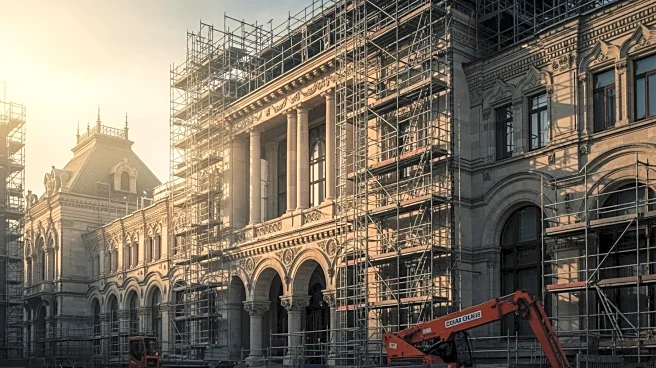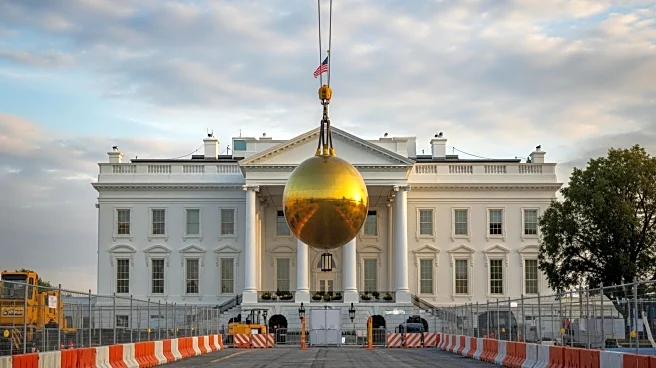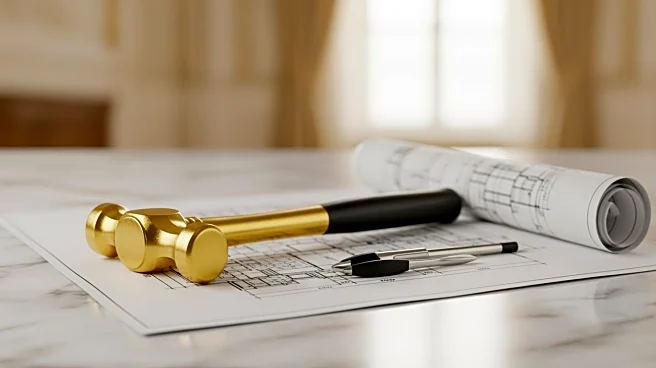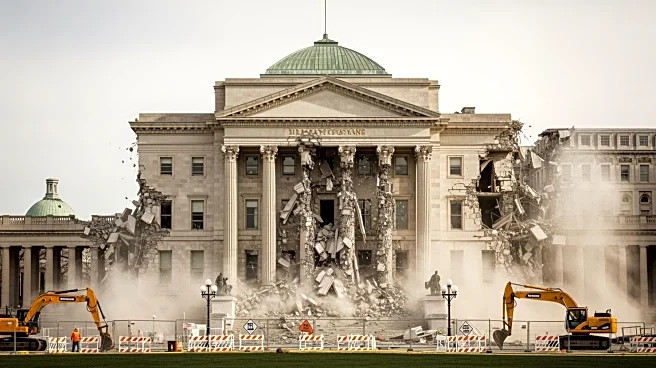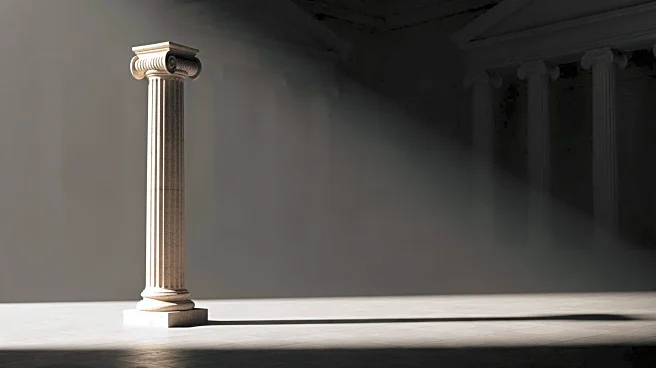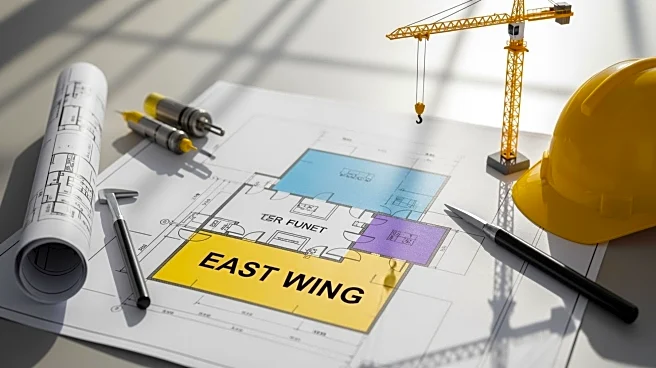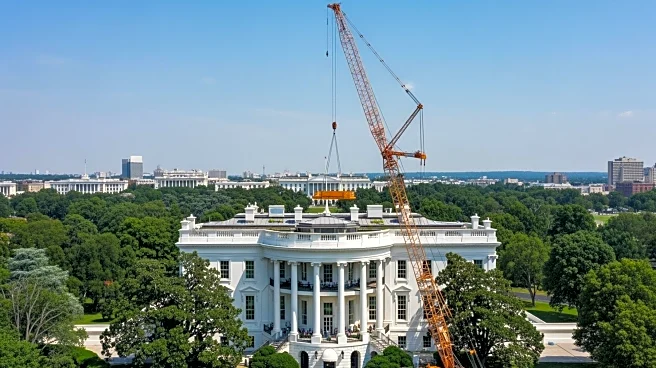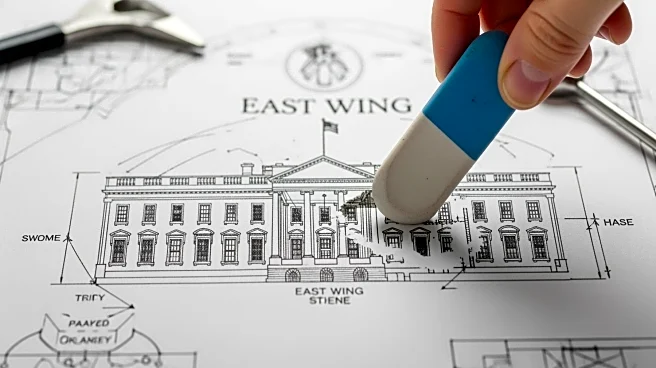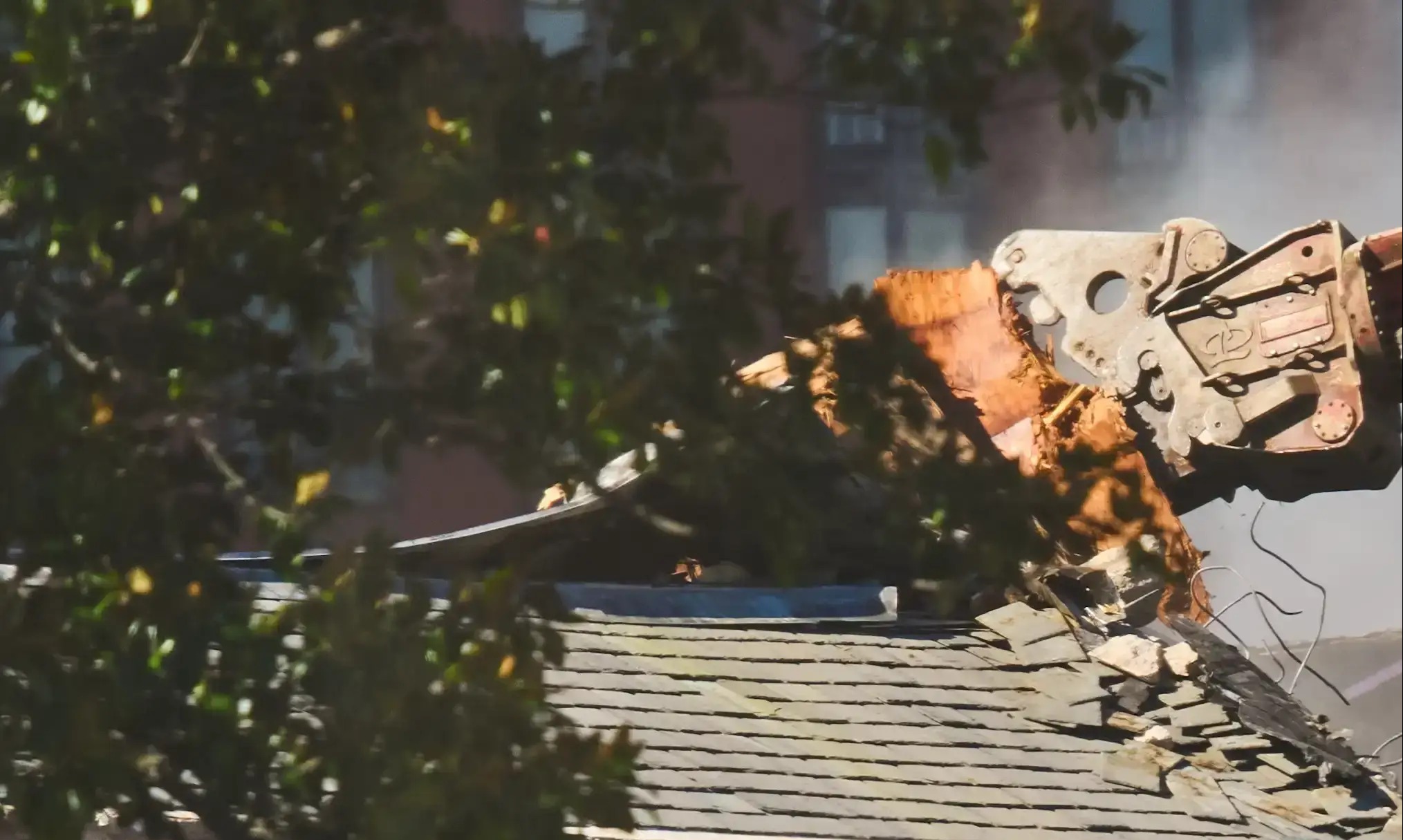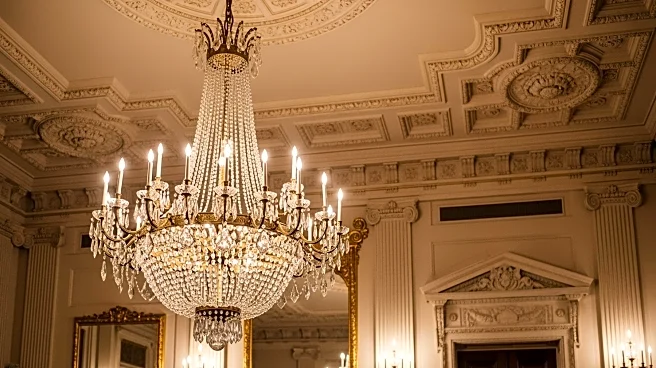What's Happening?
Recent satellite images have revealed significant demolition at the White House, where construction has commenced on a new ballroom. The images show the complete removal of the East Wing, traditionally
housing the First Lady's offices, now replaced by debris. President Trump confirmed the demolition, contradicting earlier statements that the East Wing would remain intact. The project, initially estimated at $250 million, has now risen to $300 million, funded privately. White House Press Secretary Karoline Leavitt stated that the project has evolved over time, urging the public to trust the process. Despite earlier promises to preserve the East Wing, a reassessment deemed complete demolition more cost-effective and structurally stable.
Why It's Important?
The demolition of the East Wing has sparked criticism, particularly from Democrats, who view it as an unnecessary destruction of a historically significant site. Representative Jamie Raskin criticized the move as authoritarian, likening it to historical events where the White House was damaged. The project is seen as prioritizing luxury over historical preservation, especially as it is funded by private donors, including major tech companies. The controversy highlights tensions between historical preservation and modernization, raising questions about transparency and the prioritization of resources amid economic challenges faced by Americans.
What's Next?
The White House plans to submit the ballroom's final design to a federal commission, although demolition has already begun without its review. This has raised concerns about procedural transparency and adherence to regulations. The administration argues that approval is only necessary for future construction, not demolition. As the project progresses, further scrutiny from political leaders and the public is expected, potentially influencing future decisions on federal building projects and historical site management.
Beyond the Headlines
The controversy surrounding the White House demolition reflects broader cultural and ethical debates about the balance between modernization and historical preservation. It raises questions about the role of private funding in public projects and the influence of wealthy donors on government decisions. The situation also underscores the importance of transparency and public engagement in projects involving national heritage sites.
